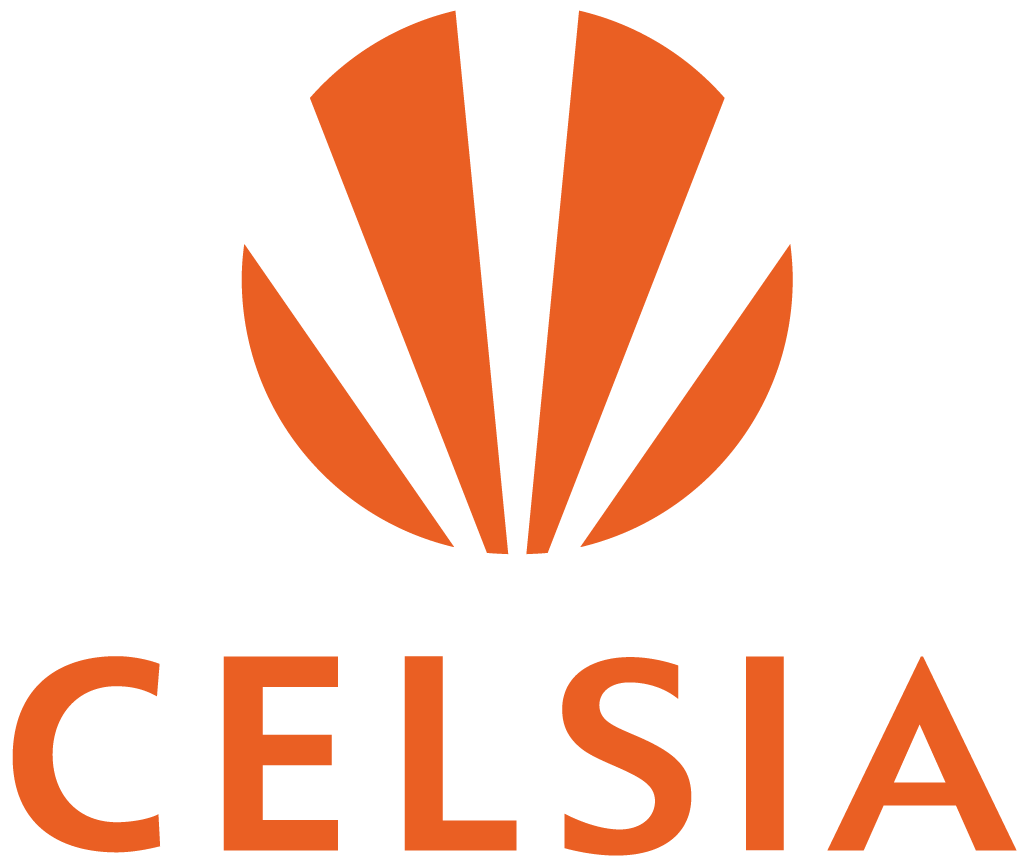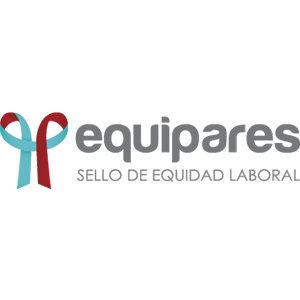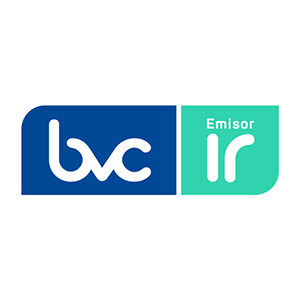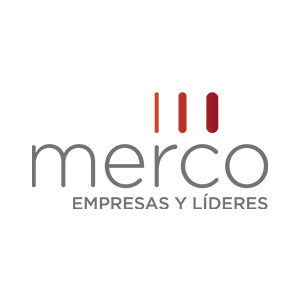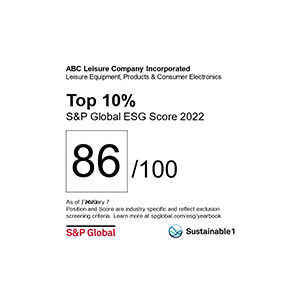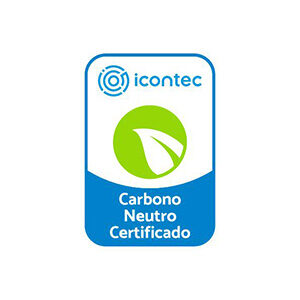For Celsia, the value chain and sustainable sourcing are important because they allow us to be aligned with our Corporate Strategy, which seeks responsible, profitable and respectful growth.
GRI (3-3) We leverage the Celsia PermaneC Sustainability Policy to incorporate environmental, social, and Corporate-Governance variables into our chain and, thus, deliver high-value solutions to the Organization that meet the needs and expectations of the different teams.
As our allied suppliers and a fundamental part of our value chain, we work together and aligned so that this Stakeholder incorporates good practices into their processes, with a sustainable approach that adds value to the business ecosystem.
Our Management
GRI (3-3) Supplier Management is one of the pillars of our Organization, which allows us to build sustainable growth over time, which seeks to guarantee the sustainability of our supply chain, with timely Risk Management that may arise, through the continuous improvement of administrative, commercial, technical, environmental, productive and financial competencies, ensuring the promotion and respect of Human Rights.
Through our management around the value chain and sustainable sourcing, we generate actions such as:
- Promotion of help lines for our suppliers in order to financially leverage their business.
- Technical- or operational-cooperation initiatives, mentoring programs within the framework of We Create Social Value.
- Requirements for our suppliers in compliance with environmental, social and governance issues and the search for the adoption of good practices in the supply chain, such as circular economy, carbon-footprint measurement, inclusion of minority groups or areas of influence , among others.
We manage the following impacts:
- We support our suppliers to contribute to their growth and strengthen their relationship with Celsia.
- We contribute to the development of our areas of influence by contracting local suppliers.
- We train suppliers on environmental and social issues (including Human-Rights Management and Occupational Health and Safety, among others) and Corporate Governance.
- We improve the identification, selection and contracting processes, in order to minimize risks throughout the value chain.
- We encourage sustainable purchases by prioritizing the local market, in such a way that it has a positive impact on the cost of raw materials and promotes the development of the national industry.
- We develop the initiatives framed in the Supply-Chain Guidelines and the Supplier Code of Conduct. We also develop relationship and communication spaces and methodologies for the identification and assessment of risks and opportunities.
Supply Chain
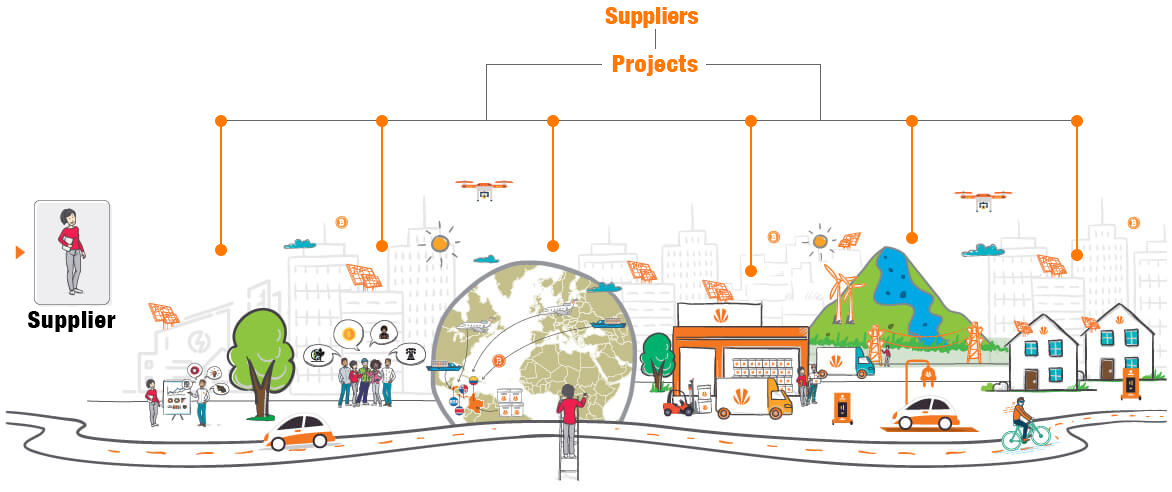
We present the pillars of Sourcing 4.0 (Digital Transformation) and Sustainable Sourcing:
- Strengthen the Supply Chain Relationship and Risk-Management Model.
- Promote simplification and digitization initiatives to enhance the transformation of the supply chain and ensure a greater contribution to the Business Strategy.
- Develop and promote lines of action to create the social value of suppliers, in order to ensure their operation and employability.
- Develop new skills and competencies that allow addressing the challenges and opportunities that arise from new business models and global trends.
Sourcing
For Celsia, it is essential to contribute to the growth of local suppliers and encourage the development of the economy of each country where we are present.
Risk Identification and Management in the Supply Chain
GRI (414-2) (409-1) (408-1) (407-1) (308-2) At Celsia, we identify risks based on standard comprehensive-management methodologies. The team dedicated to the subject deploys the methodology for the entire Company with Transversal Probability and Impact Matrices, and there is a Risk Manager in each of Celsia’s teams.
For the supply chain, the Risk-Identification Process is carried out annually, with quarterly monitoring of the Action Plans, where a Risk- and Opportunity-Identification and Qualification Workshop is conducted for each of the processes.
As a result of this task, a report is generated for each of the processes and six Risk Matrices are drawn up, in which Action Plans are subsequently identified, in order to reduce the probability or impact of each risk. Likewise, the set of controls, treatment measures and the impact on environmental, social and Corporate-Governance variables are evaluated.
Critical Suppliers
Critical suppliers are those that provide a high volume of goods or services, critical components or that are not substitutable.
For Celsia, a high sustainability risk is one that can affect the development and achievement of the Company’s Strategy Objectives. These include: ESG threats, weaknesses and specific situations to which the Company is exposed. A lack of risk orientation in the supply chain may limit Celsia’s ability to obtain long-term sustainable and reliable benefits for all its Stakeholders.
ESG Aspects
Sustainability in the Supply Chain
Target Year 2023
KPI 1Measure and assess ESG criteria in the Request for Proposal (RFP) to contract services.
Evaluate ESG criteria in
of the service RFPs.
PROPIO (C-AS2)
Result of the Three (3) Key Indicators in Recent Years
N/A
2019
KPI 2Average % of implementation of the Action Plans applied to the risks identified in the supply chain.
Take the average
implementation of the Action Plans applied to the risks identified in the supply chain to 87%.
Result of the Three (3) Key Indicators in Recent Years
KPI 3Percentage (%) of supplier satisfaction regarding Supply-Chain Management.
Maintain a minimum of
satisfaction and focus on the opportunities resulting from this measurement.
Result of the Three (3) Key Indicators in Recent Years
Priorities in the Supply-Chain Management Strategy
- Continuous strengthening of the relationship model with suppliers, to promote collaborative work, integrate them into Celsia’s Strategy and Culture, and enhance their performance and compliance to improve the contribution to the value chain.
- Supply-Chain Risk Management, anticipating the materialization of risks, through the formulation of strategies, definition of controls, monitoring their application and measuring their effectiveness.
- Be an ally of change, aligning our Supply 4.0 Strategy to the trends that impact the Company’s businesses, providing solutions to the main needs of our clients.
- Incorporation of sustainable sourcing as a fundamental pillar throughout the supply chain, with a Sustainable Purchasing Policy focused on the circular economy and good sustainable-consumption practices.
- Transform the Operating Model to provide efficient, differentiated solutions, leveraging the Company’s growth and the needs of our clients.
ESG Assessment
GRI (308-1) (414-1)
Selection
At Celsia, we have a Supplier-Selection Process that includes the evaluation of the offers that participate in a negotiation process, in which the weight of the ESG variables is 30%. Also included are:
- Supplier risk assessment (financial), Occupational Health and Safety (OHS) (good governance practices) and sustainability (sustainable purchases). This process applies to all suppliers who are invited to bid through Request for Proposals (RFP) processes.
- The Sustainable Purchasing Criteria are: circular economy, carbon footprint, gender equality, vulnerable population, human rights, ML/FT and environmental certifications.
Assessment
The Environmental, Social and Governance (ESG) criteria that we take into account for the qualification of our suppliers are:
(0-10%)
(35-50%)
(35-50%)
(0-10%)
(0-10%)
This applies to new and existing suppliers.
Comprehensive Risk Management in the supply chain.
Relationship of the Objective to the Sourcing Strategy
The application of the Comprehensive Supplier Risk-Management Model helps us mitigate the risks of the supply chain, to identify opportunities and develop relationship models that adapt to the reality of the business, market effects and to obtain the necessary information to define the focus of intervention and supplier development. Likewise, the methodology is useful to assess the risks associated with supply-chain projects and show weaknesses in processes, to define controls that allow mitigating their probability and impact.
Strengthening of Occupational Health and Safety Management in our supply chain
Relationship of the Objective to the Sourcing Strategy
- OHS Management in the supply chain allows us to mitigate business risks and protect the lives of the people who are part of our value chain.
- We implemented the I Choose to Take Care of Myself (YEC, in Spanish) School for suppliers, with the help of investor partners such as Labor-Risk Administrators (ARL, in Spanish), Celsia and contractors, through an international consultant.
- The program seeks to convert Occupational Health and Safety into a value both in our Organization and in the value chain, favorably impacting accident severity and frequency rates.
- We continue to apply the Contractor-Management Model at all stages of the supply chain: pre-contractual, contractual and post-contractual, which allows us to work on monitoring and providing feedback on the evaluation and development of this Stakeholder.
Principal Results in 2022
GRI (3-3)
We maintained a positive result of 90.2% in the Supplier Satisfaction Survey.
We worked on the development of five suppliers in terms of Human Rights, with three individual sessions through an allied consultant.
We had in-person meetings with approximately 400 suppliers in the different areas, in which we held sessions with focus groups to work on the Materiality Analysis.
We held two cybersecurity talk sessions.
We delivered five editions of the Suppliers virtual newsletter, with relevant and current information for this Stakeholder.
We conducted an Ethical Climate Survey of our suppliers, in order to find out their vision of our processes and the importance of transparency in them.
We updated the Supplier Code of Conduct; a review of the entire document was made to include sustainable sourcing and a Human-Rights approach.
We have a Sustainable Sourcing Policy that addresses ESG issues in our chain and with our suppliers.
We closed the year with the participation of 38 suppliers in the mentoring of the We Create Social Value program. Likewise, we launched the new mentoring cycle, this time with the support of a consultant, in which 19 suppliers from all Group companies will participate.
We created new communication channels with suppliers for Warehouse Management, which allows us to be more timely.
We implemented the initiatives identified in the Warehouse-Management Dragonfly Project, in the work fronts of infrastructure, training, human talent and processes.
We continue to apply the use of the Tallyapp App to carry out inventories, which makes us more agile and reliable in controlling them.
We made 17 outreach visits to the operation’s suppliers and adjusted the checklist for their review, aligned with Human Rights and equity and equality.
We obtained the Equipares Gold Seal that highlights the management carried out with our suppliers in the dimensions of non-sexist communication and inclusive language, workplace and sexual harassment.
We completed the Supplier Development Program (Phase II) with a focus on Sustainable Management, in which 46 suppliers closed gaps and improved.
In 2022, we worked with 20 companies at the I Choose to Take Care of Myself (YEC, in Spanish) School and we implemented eight of the twelve elements that the Program has.
We created some work groups focused on activities that involve our suppliers, including circular economy, segmentation and supplier development.
Lessons Learned
Is a certification program that recognizes companies and organizations that implement the Gender-Equality Management System correctly. They also recognized the work done with our suppliers.
- They highlighted the formation of the Circular-Economy Technical Table, which is made up of the Supply-Chain, Sustainability, and Corporate Socio-Environmental Teams, with a representative from the Innovation and Commercial Teams, to generate synergies that address risks and opportunities to leverage the performance environment desired by the Organization.
- They recognized the excellent qualifications obtained by the suppliers in their performance evaluation, which allows the Organization to have a level of confidence in their technical and operational capacity to provide services in accordance with the defined quality requirements.
- They highlighted the progress in the process to obtain the Organization of American States (OAS) certification from the DIAN, to gain agility in the procedures for importing and nationalizing equipment and materials and in simplifying purchases.
GRI (3-3) Short-, Medium- and Long-Term Objectives:
Short Term(0 to 2 years)
- Continue with the implementation and adjustments of the Supply Strategy, 4.0 framed in digital transformation, through the automation of processes of high operational effort and decision-making supported by analytics.
- Integrate Supplier Management in the work fronts of Sustainable Sourcing: the Supply-Chain Maturity Model, Supplier-Evaluation Model, socialization and inclusion in the circular economy, sustainable purchases, socialization of the update of the Supplier Code of Conduct and strengthening of the YEC culture among contract suppliers.
- Implement planning models to strengthen the Supply-Chain Culture and Management facing global markets and implementation of the Nearshoring Strategy, in order to ensure the availability of materials.
Medium Term(3 to 5 years)
- Implement a comprehensive tool to manage suppliers throughout their life cycle.
- Provide and ensure Connectivity and Collaboration Models with our suppliers.
- Consolidate the Management of Strategic Allies in the Supply Chain Program, in which suppliers become key business partners by assuming responsibility for the logistics operation.
Long Term(6 or more years)
- Leverage new businesses through Sustainable-Sourcing Models.
- Incorporate virtual processes in Supply-Chain Management and flexible, mobile structures with less consumption of working capital.
- Develop and implement fully automated processes, refocusing work teams towards strategic processes.
Sustainable Sourcing: The inclusion of environmental, social and corporate-governance variables throughout the supply chain, from the conception of needs to the adoption of good practices in our suppliers.
Circular Economy: A discipline that encourages us to think about designs and business models, identify new products and services, and optimize resources to get the most out of our business.
Maturity Model: The degree to which a company, team or area assimilates or integrates good practices regarding the management of various programs or projects. It includes several factors such as measurement tools, evaluation criteria, among others.
Suppliers with a High Sustainability Risk: They can affect the development and achievement of the objectives of the Company’s Strategy. These include environmental, social and economic (ESE) threats, weaknesses and specific situations to which the Company is exposed.
RFP: Request for Proposal
YEC (in Spanish): The I Choose to Take Care of Myself Program created by Celsia on OHS for suppliers and employees, in order to internalize safety as a non-negotiable value and implement safe practices.
